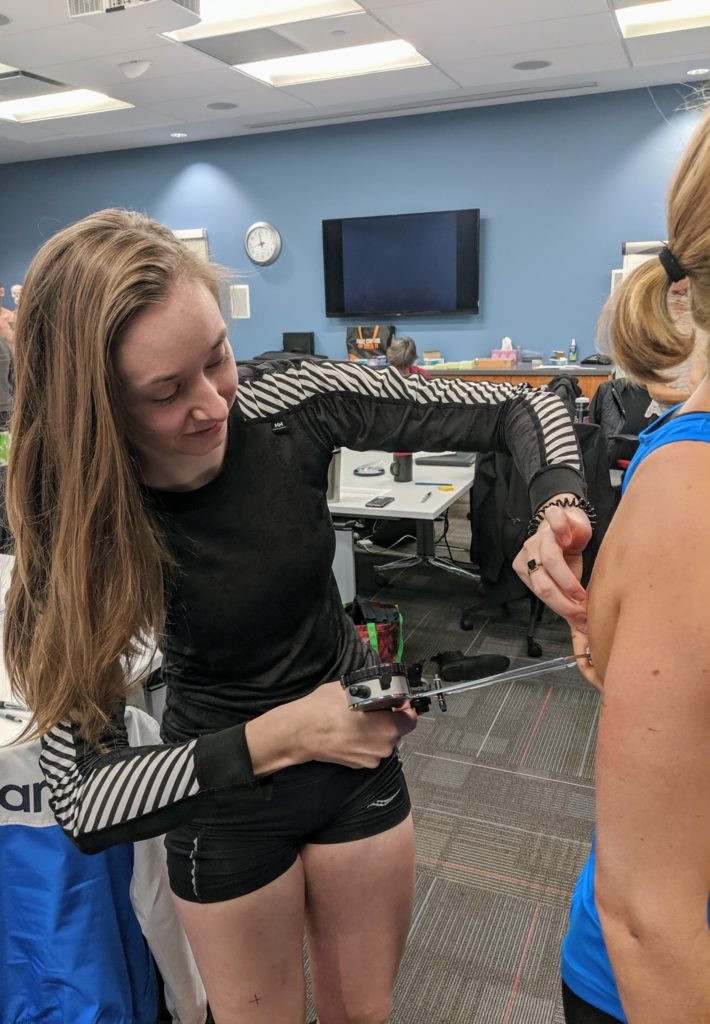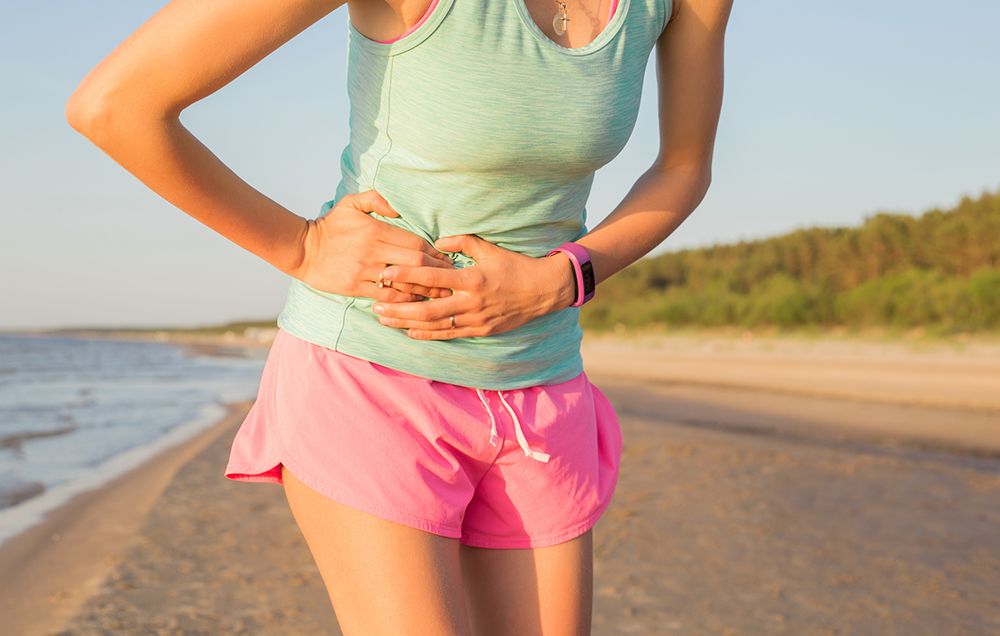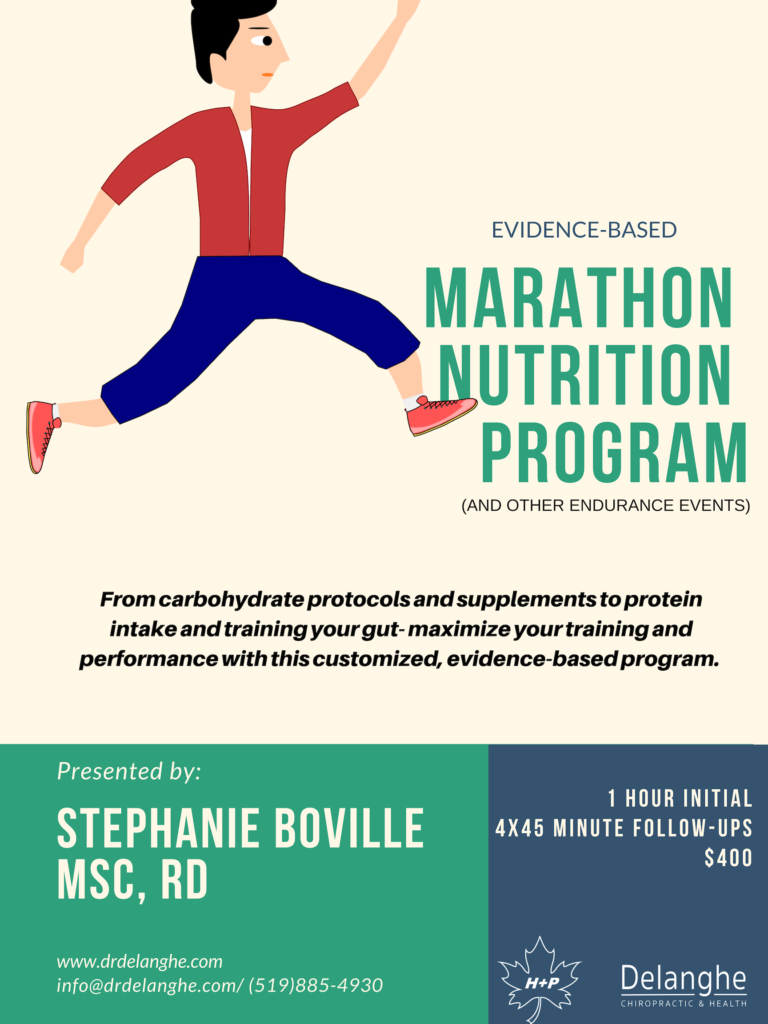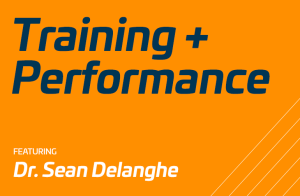Do you ever get the “runs” on the run?? What about stomach pains, burping, nausea or flatulence? If the answer is yes, you are not alone. In fact, 30-50% of endurance athletes struggle with gastrointestinal (GI) issues and is a common reason for underperformance. This rate sky rockets to 90% in athletes training and competing in ultra-endurance events. In this article you will learn how a few nutrition tactics can help you have a GI issue free run!
Why do we experience these GI issues?
There are a few reasons why with intense prolonged activity there seems to be a higher prevalence of GI issues:
- Increased blood flow to the muscles and away from the gut may result in malabsorption of nutrients
- Increased blood flow to the muscles and away from the gut may result in damage of the gut lining resulting in bacteria and nutrients passing through the gut (increased permeability leading to endotoxemia)
- Delay gastric emptying (ie slower movement of the food from stomach to intestines) can cause upper GI issues such as nausea, reflux or burping
- Change in transit time of food leading to speeding up or slowing down of food movement through the GI tract
Interesting note: research is showing that the gut damage is highest in those who ran their marathon fastest yet had the least symptoms, leading the researchers to believe that some people are more sensitive to the higher levels of gut permeability and damage. One other possible reason for this is the individuals gut microbiome, where an imbalance of good and bad bacteria (dysbiosis) may be the difference from having symptoms or not.
What can we do about it?
First off, you want to consider if your GI issues are constant. If the answer to that is yes, you should consult your doctor to rule out any underlying GI diseases such as crohn’s or ulcerative colitis.
Secondly, you want to make sure you employ good nutritional habits prior to making major changes to the diet like we will discuss below. First things to consider are meal and snack composition and timing. Eating the wrong thing too close to exercise can lead to inadequate time to digest the food leading to cramping and stomach discomfort. Keeping balanced larger meals 3-4h before exercise is recommended. As you move closer to the exercise consuming smaller, more carbohydrate based snacks tends to work best. Avoiding high fat, high protein, high fibre foods close to exercise can be another strategy to reduce stomach discomfort. Limiting coffee/caffeine and lactose (sugar in milk/yogurt) close to workouts can be helpful. It is also important to train the gut to handle carbohydrates during your workouts, and NEVER EVER try something different on race day.
What about Gluten?
If you have tried the above recommendations and are still finding it difficult to make it through your workouts and races without GI issues, there are a few new strategies that have been researched. Gluten is often eliminated by elite athletes on the assumption that it causes them GI pain. About 40% of non-celiac athletes will eliminate gluten for at least 50% of the year due to GI reasons. Although they anecdotally find this helps reduce symptoms, research does not always support this and often shows gluten elimination in non-celiac individuals does not result in decreased GI symptoms or inflammation.
Another line of thought regarding why athletes anecdotally see GI improvement when eliminating gluten-rich foods is they are also eliminating fructans (which are considered to be a FODMAP)
FODMAP’s are a collection of short chain fermentable carbohydrates. If they are malabsorbed and or are present in the colon they can be used to feed the good bacteria (prebiotic) causing gas, bloating and other GI symptoms.
Fermentable
Oligosaccharide- carbohydrate chain with 3-10 sugar units (barley, rye, black beans, cashews, garlic, onion, beets)
Disaccharide: carbohydrate chain with 2 sugar units like lactose (cows milk, yogurt, sour cream)
Monosaccharide: single sugar unit like fructose (found in fruit, apples, fig, mango, pears and sweeteners like high fructose corn syrup)
and
Polyols: sugar alcohols found in sugar free gum and candy (sorbitol, maltitol, xylitol)
A recent research study by Wiffin et al. (2019) investigated the effect of a short term (7 day) high and low FODMAP diet on GI symptoms during exercise. They had 16 participants, both male and female complete the two dietary interventions in a random order with a one week wash out period between trials. They found that low FODMAP diet resulted in overall improvement of GI symptoms. On an individual basis 69% of the participants reported a positive effect of the low FODMAP diet on symptom management, specifically for pain and bloating. They also show that participants perceived they were able to train more frequently and intensely on a low FODMAP diet.
Warning: Low FODMAP is not a lifestyle!
Low FODMAP should not be followed on a daily basis as it can be restrictive and alter your gut bacteria as these carbohydrates are important prebiotics (they feed the good bacteria in your gut). It is also important to make sure you have a good dietary plan if you follow this diet to make sure you have adequate carbohydrate provision for your activity, especially if you are trying this before a big race. Following the diet for 3-7 days prior to a race is recommended if you do find it helpful to reduce your GI symptoms. If you continue to have GI pain during training, doing a FODMAP elimination and reintroduction technique should be used to find foods that you are more sensitive to and how much your body can handle.
Recap:
- Is your GI pain occurring all the time? If so, seek medical advice and testing
- Look at meal timing and composition
- Train your gut and practice your race day nutrition to avoid unexpected surprises
- Potentially employ a short term low FODMAP diet prior to important races
I hope this information helps you run free of GI pain. If you would like more information on implementing a low FODMAP diet, I am ready to help. It is my passion and goal to help you be the best athlete you can be. For more information, visit the clinic website!
References:
Lis, Dana M. Exit gluten free and enter low FODMAPs: A novel dietary strategy to reduce gastrointestinal symptoms in athletes. Sport Medicine. 2019. 587-597. https://doi.org/10.1007/s40279-018-01034-0
Wiffin Melanie, Smith Lee, Antonio Jose, Johnstine James, Beasley Liam, Roberts Justin. Effect of a short-term low fermentable oligosaccharide, disaccharide, monosaccharide and polyol (FODMAP) diet on exercise-related gastrointestinal symptoms. Journal of the International Society of Sports Nutrition. 2019. 16:1. https://doi.org/10.1186/s12970-019-0268-9
Sigma Nutrition Radio Danny Lennon Episode 246 with Jamie Pugh- Gastrointestinal Symptoms in Athletes.








 Warmup Duration
Warmup Duration